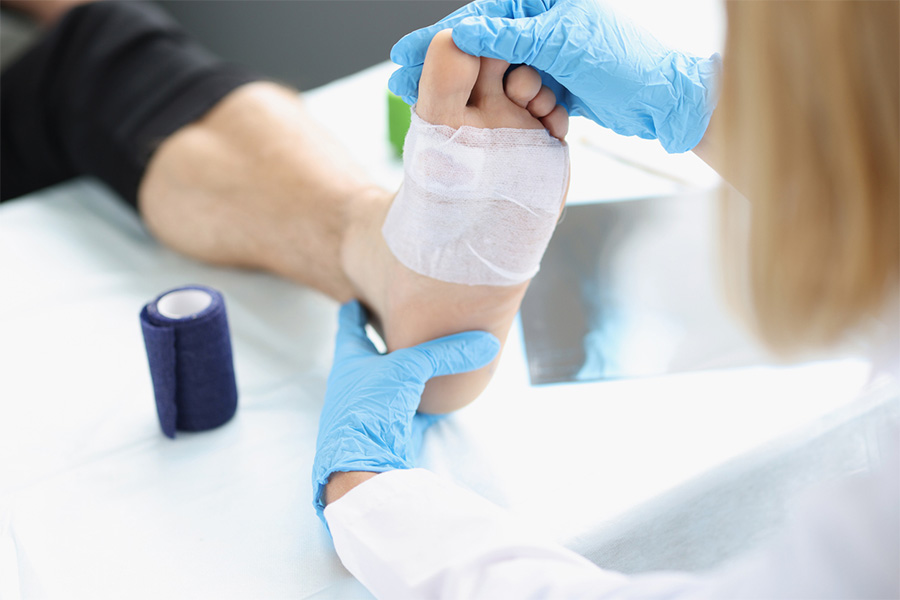A fractured foot can be very painful and make it difficult to stand, walk, or do any other activity while on your feet. If you believe you have a foot fracture, the best thing you can do is to see a doctor who will examine your foot and order an X-ray to determine the location and type of the fracture you have. The ankle joint, metatarsal bones (located in the middle of the foot), sesamoid bones (located at the end of the big toe), and toes are common locations of fractures. How a doctor treats a fracture in the foot depends on the severity of it.
Non-Displaced Fractures
Non-displaced fractures can heal on their own, provided the foot is immobilized. This applies to metatarsal fractures and big toe fractures. If you suspect you suffered a non-displaced fracture, you must be careful until you see a doctor for a diagnosis. Rest and keeping weight off the affected foot are critical to recovery. Ice therapy helps bring the inflammation down. It is recommended that you apply ice to the injury for 20 minutes at a time several times a day. After icing the injury, wrap a compression bandage around it to take the pressure off the injury and keep the foot immobilized. Also, keep the leg elevated.
If it is confirmed that you have a fracture, your doctor will give you detailed instructions on what to do during recovery. You may need to wear rigid shoes during recovery. Toe fractures also heal without surgery but with the use of a splint, to tape the toe to a neighboring toe for better support and stability. You will also need to wear a special type of boot to protect the toe while it heals. During recovery, your muscles may become stiff, which is why physical therapy is important to help restore strength and flexibility.
Displaced Fractures
Displaced fractures, or fractures that have the broken bones separating from each other, need to be aligned and set by the doctor through reduction surgery. In order for a broken bone to heal, it needs to be aligned. The doctor manipulates the pieces of bone to allow the bone to heal properly. If the bone broke into several pieces or if the fracture involves a joint, the doctor may use plates and screws to hold them in place in internal fixation surgery. If the fracture is severe (due to a traumatic incident), the doctor can perform a bone graft and reconstruct soft tissues. You will most likely need to wear a cast following surgery.
Non-Union Fractures
There is a possibility of fractures in the foot not healing within the normal timeframe. These are called non-union fractures. There is a higher risk of non-unions in patients who do not receive proper fracture care or inadequate stabilization or have developed an infection. Doctors may use a bone graft to help the fracture heal.
Foot Fracture Treatment in Cincinnati, OH
At Cincinnati Foot & Ankle Care, our podiatrists provide expert treatment for fractures in the foot. Due to our advanced training and decades of experience, we are able to treat non-displaced, displaced, and non-union fractures and can quickly address complications that may arise during recovery. We will let you know what to expect during recovery and answer all questions you may have from treatment to rehabilitation. To make an appointment with any of our podiatrists, call our podiatry clinic nearest to you or request one online now.





